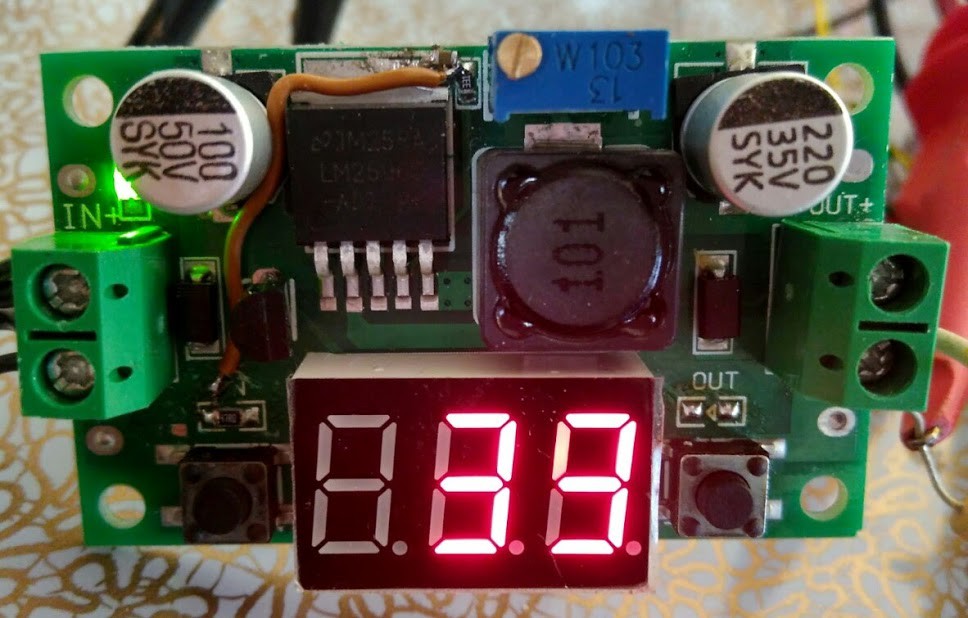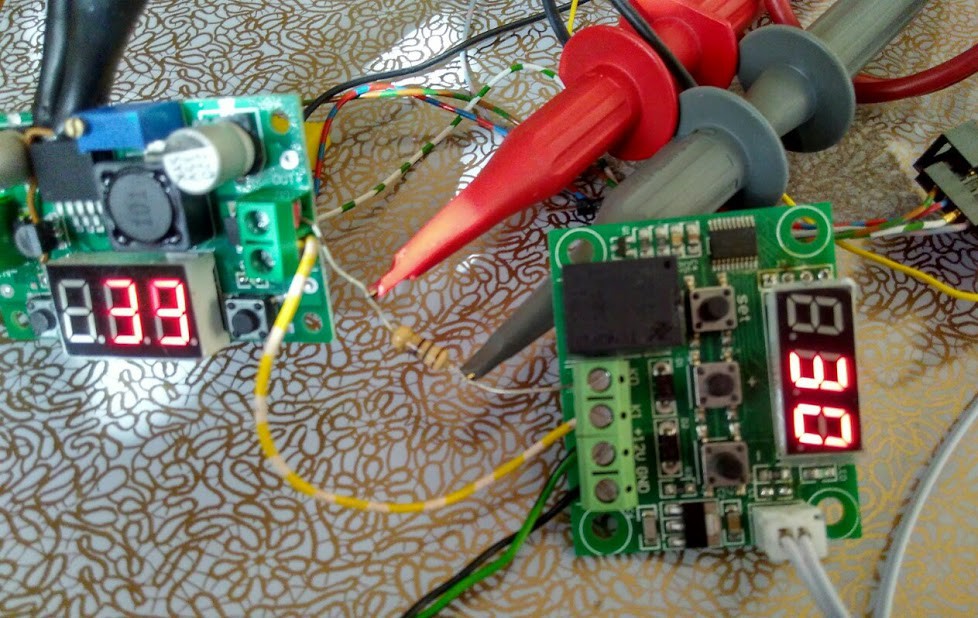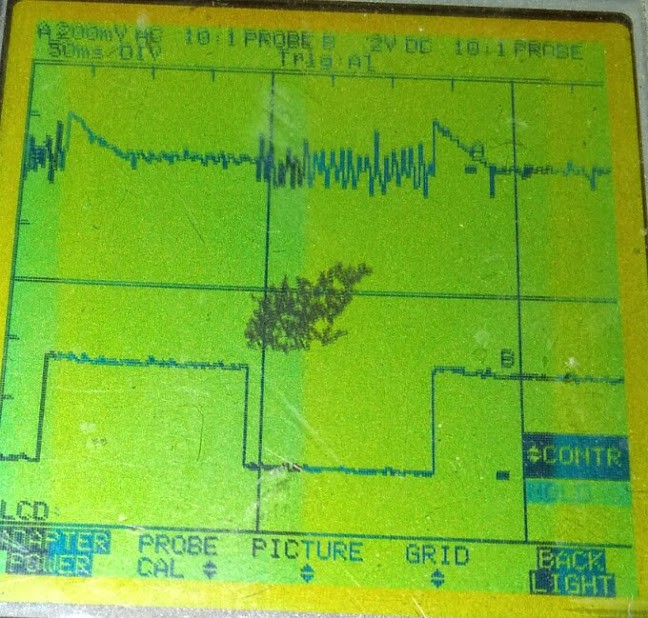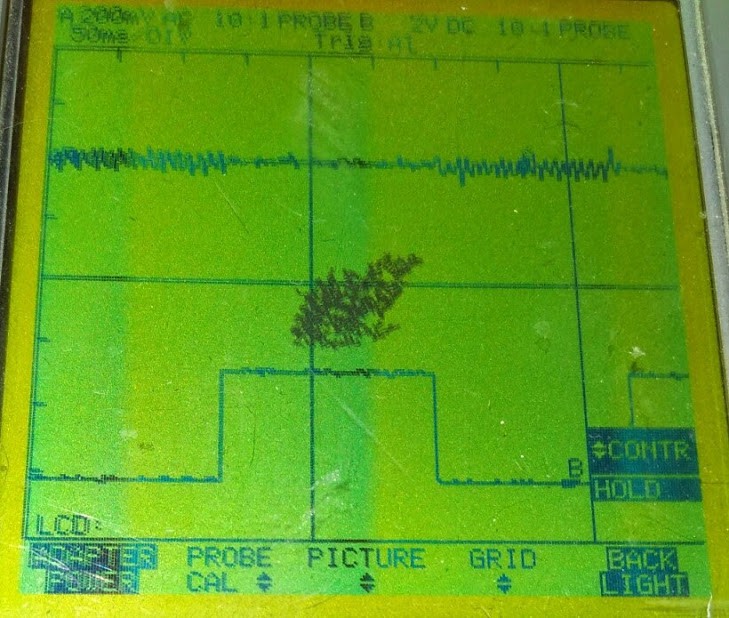I modified one of the new "green" DCDC converters along the lines of the solution for a LM2596 based variable DC/DC converter proposed by @K.C. Lee:
- LEDs "IN" and "OUT" removed
- 47R 0804 added instead of LED "IN" (PC.3)
- Trace from LM2596 heat sink/GND to 330R in feedback loop cut, C 10µF 0603 added
- Trace from +3.1V to LED "IN" anode cut, 3mm solder mask on trace removed
- wire from 47R to 330R in feedback loop added
This modification replaces the GND of the LM2596 feedback input voltage divider with a variable voltage, controlled by a PWM output of the voltmeter's STM8S003F3P6. The LM2596 compares the feedback voltage with a reference voltage of about 1.25V, and thus adding a bias voltage to the feedback reduces the output voltage of the DC/DC converter

Additional changes were:
- 10µF added to the LM317 (back side)
- 0.1µF added to STM8S003F3P6 pin 7 Vss (back side)
- Firmware DCDC flashed (branch develop)
With the new firmware, it's possible to establish a half-duplex console session via PC.7 (pin3, DP of the LED display) using a diode (anode PC.7-RxD, cathode TxD). While the session is active, the DP (decimal point) of the 7-LED display remains inactive.

With the Forth script from one of the previous posts, the STM8S main Timer(TIM1) reload value is 1000, and at 16Mhz clock the reload period of TIM1 is T=62.5µs.
For calibration, the output voltage of the DC/DC converter was adjusted to 13V with the trimmer, while the PWM duty cycle was set to 0. The power supply I used is a land-fill grade "wall wart" (i.e. transformer, bridge rectifier, C 470µF, output voltage about 16V), which means that the results can be expected to be on the pessimistic side.
The RC filter used for converting the PWM signal to DC has τ= 47R * 10µF = 470µs. With T/τ= 7.5 the passive filter appears to be sufficient for our needs (33R, or 4.7µF should work, too).
On the serial console, the command line "330 pwm" sets a duty cycle of 33%, which results in a DC/DC converter output voltage of about 3.3V (which is pure
coincidence). In order to test the transient response I used a W1209 as a variable pulse generator (10 lines of Forth, including UI, hacked in about 10 minutes, about 30 lines after "beautification"). The NO contact of the W1209 contact switches a resistor of 18R as a variable load.

My trusty old scope (an almost 25 years old Fluke Scopemeter with damaged LCD) reads both the output voltage of the CN2596-2 (AC, 200mV/DIV), and the switched GND of the load resistor. The result isn't pretty. There is an overshoot of 200mV when the load is removed, and the noise under load is quite high (also about 200mV).

For comparison, I repeated the test with an unmodified "green" CN2596-2 adjusted to 3.3V. As expected, both noise, and transient response are much better.

The reason for the much poorer performance is the GND offset of about 1V (33% PWM) in the feedback loop, which forces the output voltage down from 13V to 3.3V. This was expected, as feedback loop amplification is now just about 20% of what it used to be: (1.25V - 1V) / 1.25V = 0.2.
Whether the control performance is good enough, or not, depends on the application. However, the setup represents almost a worst-case situation. If the at 0% PWM the feedback would have been adjusted to a lower value (e.g. 7V), or if the PWM duty cycle would be lower (e.g. 20% PWM for about 9V output voltage), the resulting feedback loop amplification, and therefor noise and transient response, would have been better. In any case, this setup is appears to be sufficient for test automation (especially e.g. brown-out, and bad/noisy power supply simulation).
Level up :-)
 Thomas
Thomas
Discussions
Become a Hackaday.io Member
Create an account to leave a comment. Already have an account? Log In.